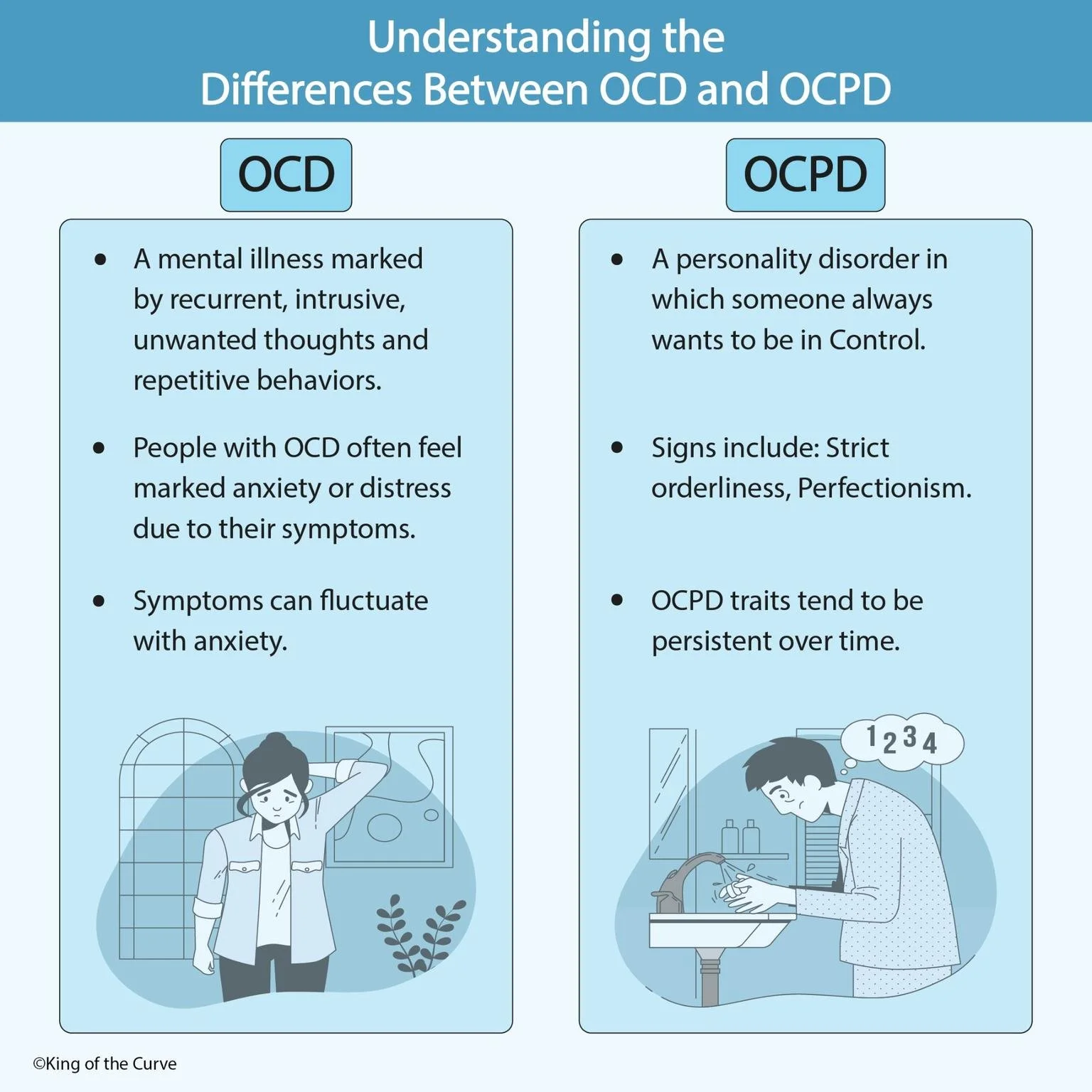🧠 OCD vs OCPD: What’s the Difference and Why It Matters for the MCAT
Understanding subtle distinctions between psychological disorders is a recurring challenge on the MCAT. One such commonly confused pair is Obsessive-Compulsive Disorder (OCD) and Obsessive-Compulsive Personality Disorder (OCPD). Though the names are similar, these are distinct mental health conditions—and the MCAT loves to test that nuance.
💡 Quick Overview: Why This Matters for the MCAT
The MCAT Psychological, Social, and Biological Foundations of Behavior section covers mental health concepts and expects you to:
Differentiate between mental illnesses and personality disorders
Recognize symptom patterns and behavioral traits
Link psychological theories to real-world clinical behavior
That’s where understanding OCD vs OCPD becomes essential.
🔍 Key Differences Between OCD and OCPD
Here’s a breakdown of the most testable distinctions:
| Feature | OCD (Obsessive-Compulsive Disorder) | OCPD (Obsessive-Compulsive Personality Disorder) |
|---|---|---|
| Disorder Type | Anxiety disorder | Personality disorder |
| Control Element | Sufferers often feel out of control over intrusive thoughts | Individuals feel in control and justify their behavior |
| Symptoms | Recurrent, intrusive thoughts + compulsive behaviors | Rigid perfectionism, orderliness, and control |
| Distress Level | High distress; behaviors done to alleviate anxiety | Low personal distress; behaviors seen as appropriate |
| Course of Disorder | Symptoms fluctuate with anxiety | Traits are persistent and pervasive |
🧠 MCAT Tip: How This Shows Up in Questions
Here’s how the MCAT might test this:
Passage Excerpt: A 29-year-old man repeatedly checks that his doors are locked every 5 minutes, even when he remembers locking them. He describes feeling anxious until he performs the ritual.
📌 This points to OCD—intrusive thoughts + distress + compulsions.
Alternate Passage: A 35-year-old woman believes her coworkers are lazy because they don’t organize their files alphabetically. She insists that her way is correct and becomes frustrated when others don’t follow it.
📌 This is more consistent with OCPD—rigid perfectionism + lack of insight + sense of control.
📝 Strategy for MCAT Success
Look for Distress: OCD often includes clear emotional distress; OCPD does not.
Check for Insight: Those with OCD typically recognize their thoughts as irrational. OCPD individuals often don’t.
Watch for Chronicity: OCPD traits are lifelong, whereas OCD symptoms may wax and wane.
🔄 Practice identifying these cues using KOTC’s Adaptive Q-Bank with real-time feedback and timed modes.
✅ Final Takeaways
OCD is an anxiety disorder marked by distressing thoughts and compulsive actions.
OCPD is a personality disorder centered around control, order, and perfectionism.
Use distress level and insight to distinguish between the two on the MCAT.
📲 Boost Your Prep with King of the Curve
From 1000+ science visuals to multiplayer MCAT drills, King of the Curve makes learning effortless and engaging.
👉 Download the KOTC App
👉 Explore Pre-Med Essentials
👉 Get Daily MCAT QOTDs
Frequently Asked Questions (FAQs)
-
Aim for 4-6 focused hours, ensuring you incorporate breaks to avoid burnout.
-
Practice mindfulness techniques, take practice exams under realistic conditions, and maintain a balanced lifestyle.
-
Set short-term goals, seek support from mentors, and reward yourself for small achievements.
-
Regular exercise improves focus, reduces stress, and enhances overall mental clarity.
-
KOTC offers personalized learning tools, gamification features, and adaptive question banks to help students stay on track without burnout.


